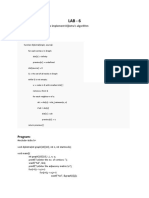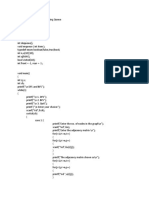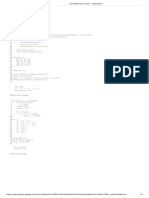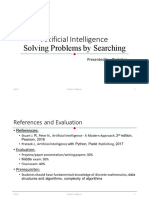0% found this document useful (0 votes)
82 views25 pagesDS Practical Code Answers
The document discusses implementation of various graph algorithms and data structures in C including adjacency matrix, adjacency list, binary search tree operations, topological sorting, minimum spanning tree (Prim's algorithm), and depth-first search. Code snippets are provided to demonstrate creating and traversing graphs, trees and implementing the different algorithms.
Uploaded by
hacef44809Copyright
© © All Rights Reserved
We take content rights seriously. If you suspect this is your content, claim it here.
Available Formats
Download as PDF, TXT or read online on Scribd
0% found this document useful (0 votes)
82 views25 pagesDS Practical Code Answers
The document discusses implementation of various graph algorithms and data structures in C including adjacency matrix, adjacency list, binary search tree operations, topological sorting, minimum spanning tree (Prim's algorithm), and depth-first search. Code snippets are provided to demonstrate creating and traversing graphs, trees and implementing the different algorithms.
Uploaded by
hacef44809Copyright
© © All Rights Reserved
We take content rights seriously. If you suspect this is your content, claim it here.
Available Formats
Download as PDF, TXT or read online on Scribd
/ 25


















































































